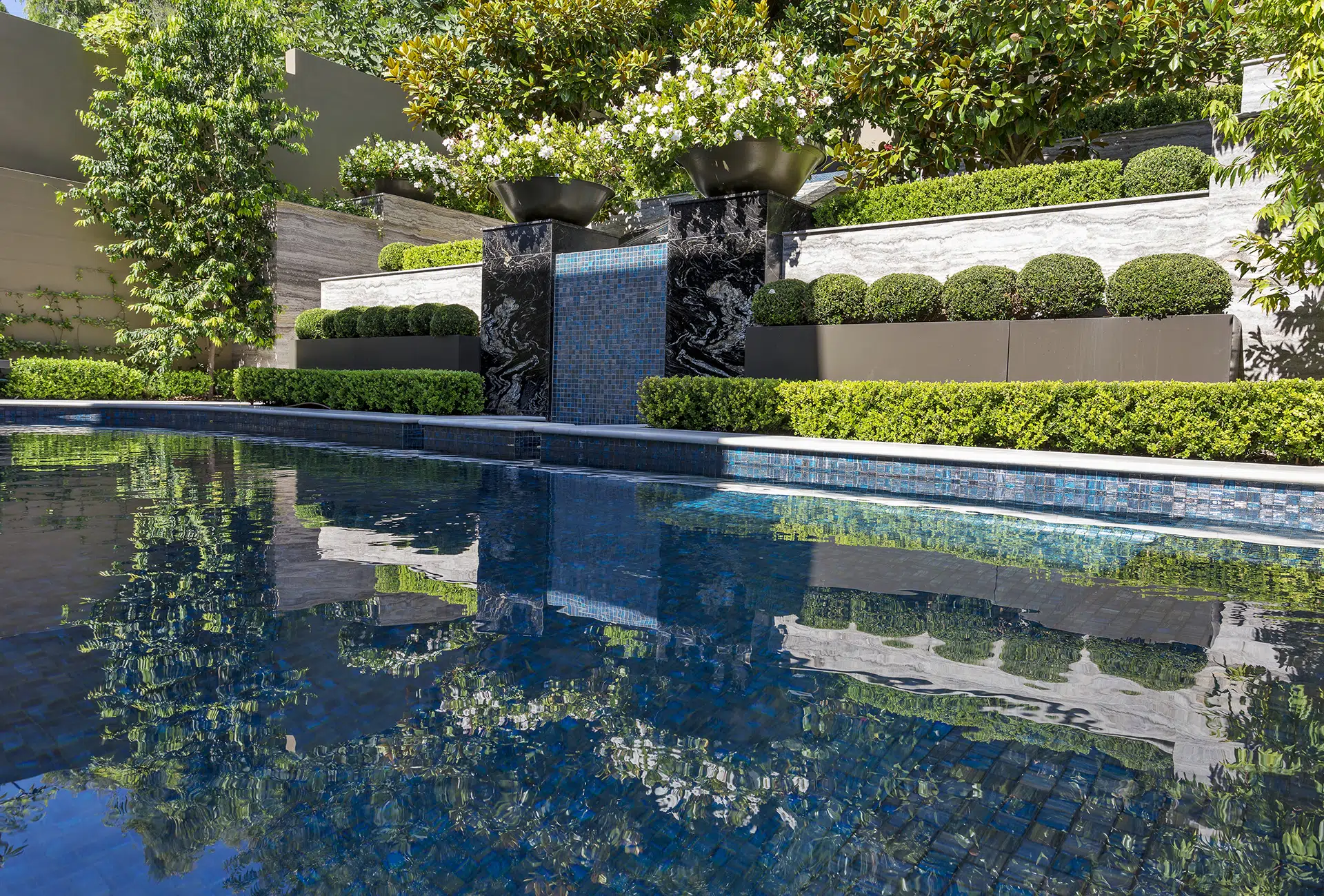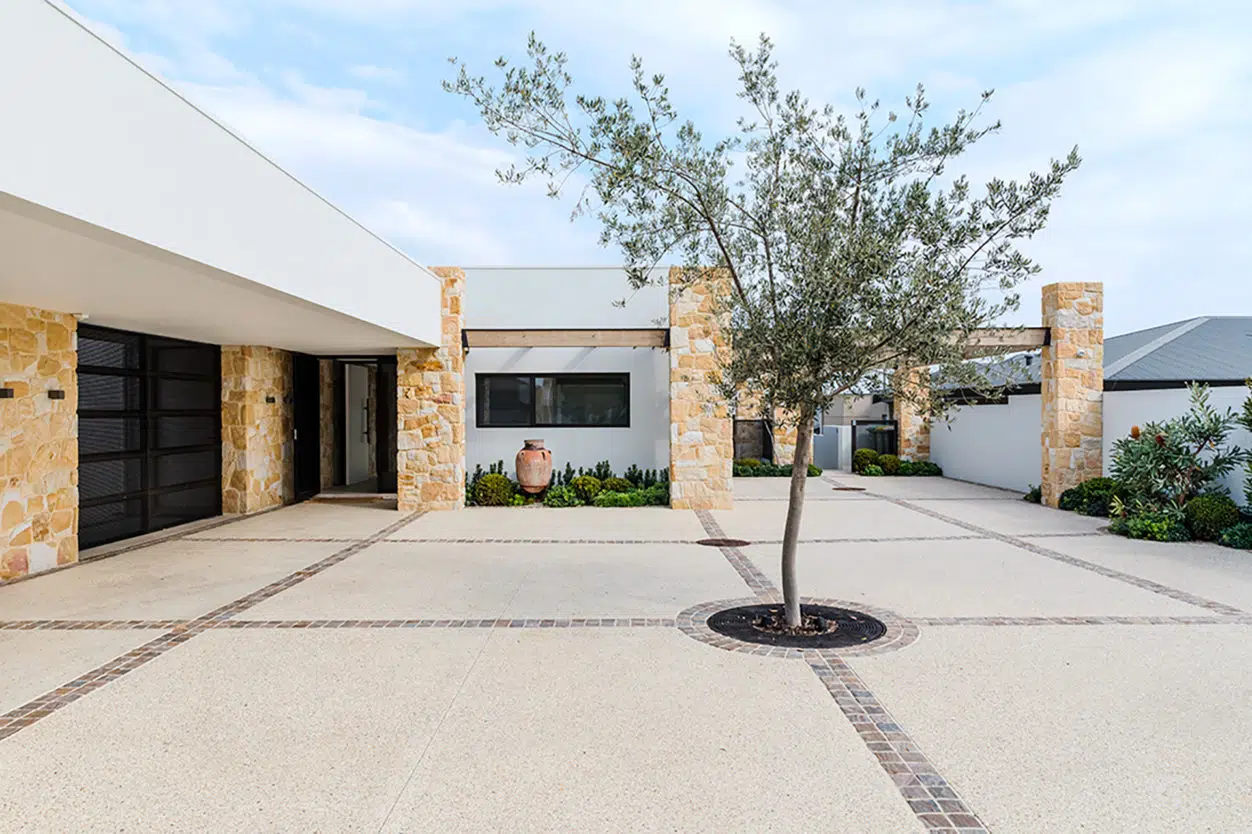Mediterranean gardens remain a popular stylistic choice in Australian landscapes for both practical and preferential reasons. Hardy Mediterranean planting and heat-cutting colour choices make a great fit with our climate, and the evocative sensory experiences of Mediterranean plants call to mind that lazy overseas holiday many of us would just love to take. Mediterranean gardens can be ornate and traditional or restrained and contemporary. Here are our tips for injecting a little bit of Mediterranean flavour into your garden design, and some of the things you should consider while planning.
What Exactly Is a Mediterranean-Style Garden?
Mediterranean-style gardens evoke the flora, traditions, finishes and climate of the Mediterranean, a region that is both unified and diverse. Think of Greece, Italy, Spain, and Morocco. Commonly, in Australia, people are looking to recreate the olive trees and breezy waterways of Tuscany. These gardens often feature tiled patios, pale gravel and stone, and ornate decorative features. Mediterranean gardens make relaxing spaces not only by virtue of their design but also because they tend to require relatively little maintenance to thrive.
If you’re looking to create a beautiful Mediterranean garden, this article will help you get started. Here are 12 of our recommendations for designing your landscape.
Using the Colours of the Mediterranean
If you visit a country that is hot most of the year, you’ll notice they use a lot of light, neutral colours and pastel shades. Using a few brighter colours to accent the space can work well, but Mediterranean gardens are at their best when the colours of the plants are the focus.
Accessorise with terracotta pots, and materials such as sandstone, sand and limestone, will help draw those neutral tones throughout the landscape, complementing the planting.
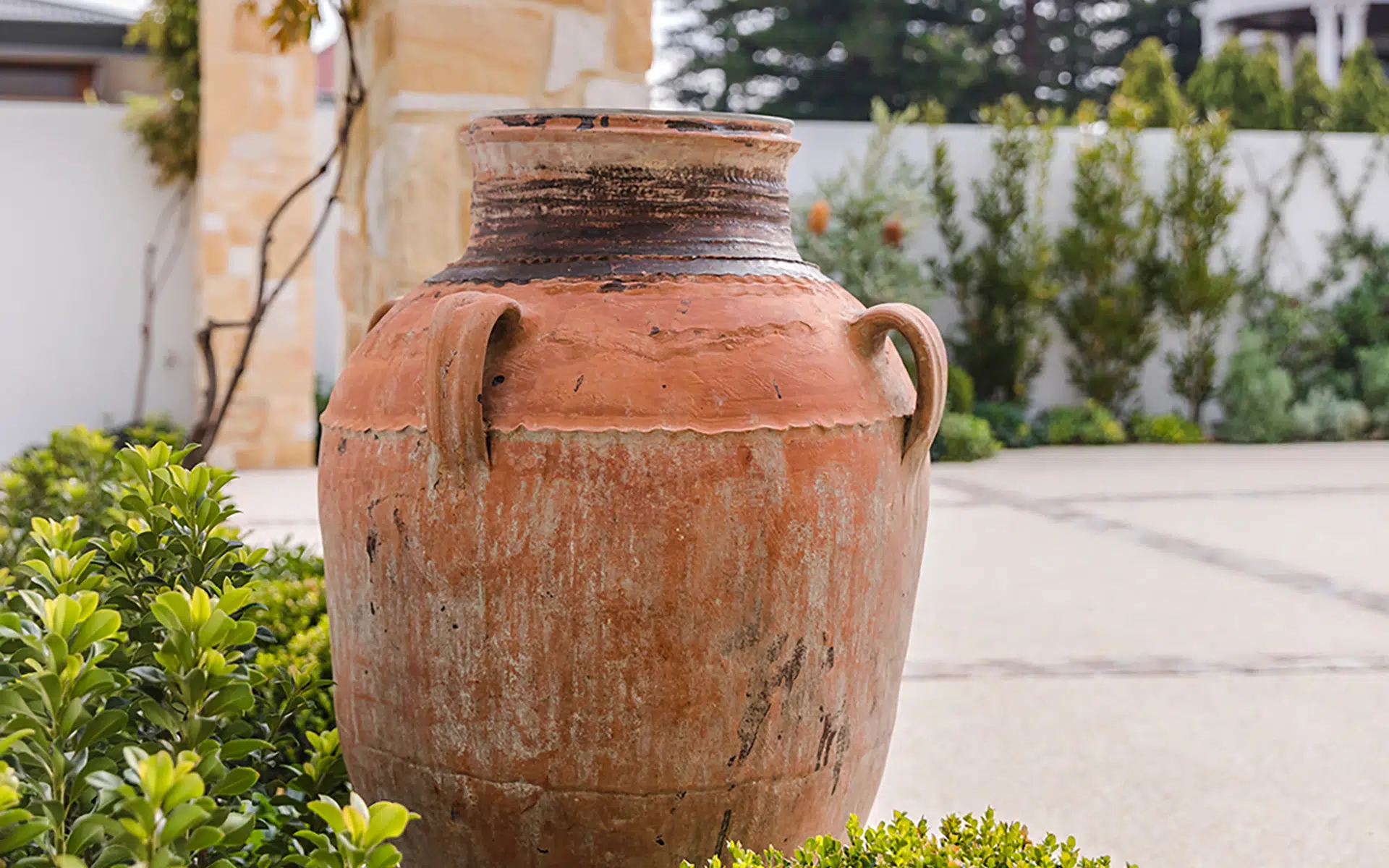
Make use of gravel throughout the garden
Few materials are more low-maintenance than gravel, and it represents an easy way to evoke the Mediterranean. Pale gravel helps to highlight your planting and reflects and diffuses heat. Gravel is relatively simple to apply, make sure that you include a water-permeable membrane underneath your gravel, and try adding a few larger rocks and boulders for a much more natural look.
In areas where you’ll be walking, we recommend using angular chippings that are between 10mm and 20mm, they are much less likely to get caught underneath shoes. Gravel looks especially good when used to highlight blooms in various colours and sun-loving plants.
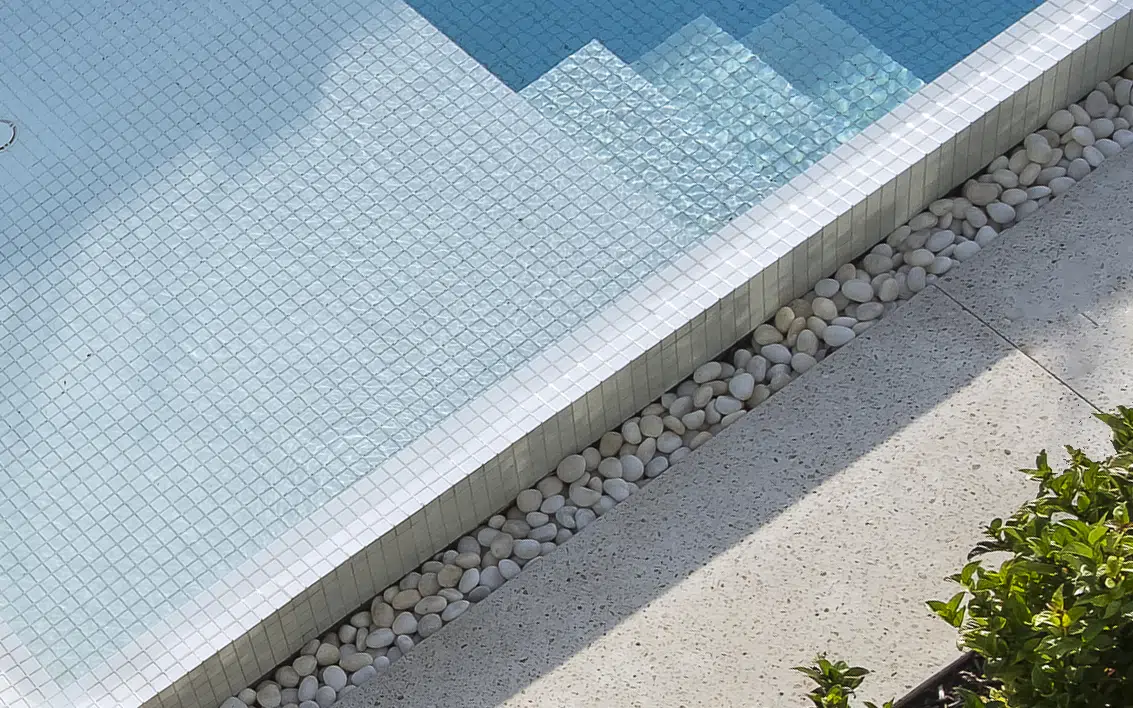
Consider Adding an Outdoor Kitchen
Lean into the rich Australian and Mediterranean traditions of cooking outdoors by adding a kitchen to your outdoor area. If you’ve got the budget and inclination for it, a well-designed pizza oven can make a big lifestyle upgrade to an outdoor space, and also provide an opportunity to incorporate even more visual appeal. Focus on making the space welcoming and cohesive, and make sure to include space for dining nearby.
Adding a pergola over the entire area helps to create a distinct zone, and depending on your space, presents a great opportunity for a trellis. If it’s to your taste, a grapevine can add Mediterranean vibrancy, and provide a seasonal element to the garden.

Consider Dark Colours for Your Pergolas
Pergolas that are painted in dark colours will provide contrast to the landscape and, they will also help highlight any climbers you may train over the structure. Dark colours can also be great for fencing for the same reason, though also keep in mind how the materials lend themselves to the look you’re going for. If your garden has an existing rustic brick wall, for example, it might be a shame to paint it or replace it with something less style appropriate.
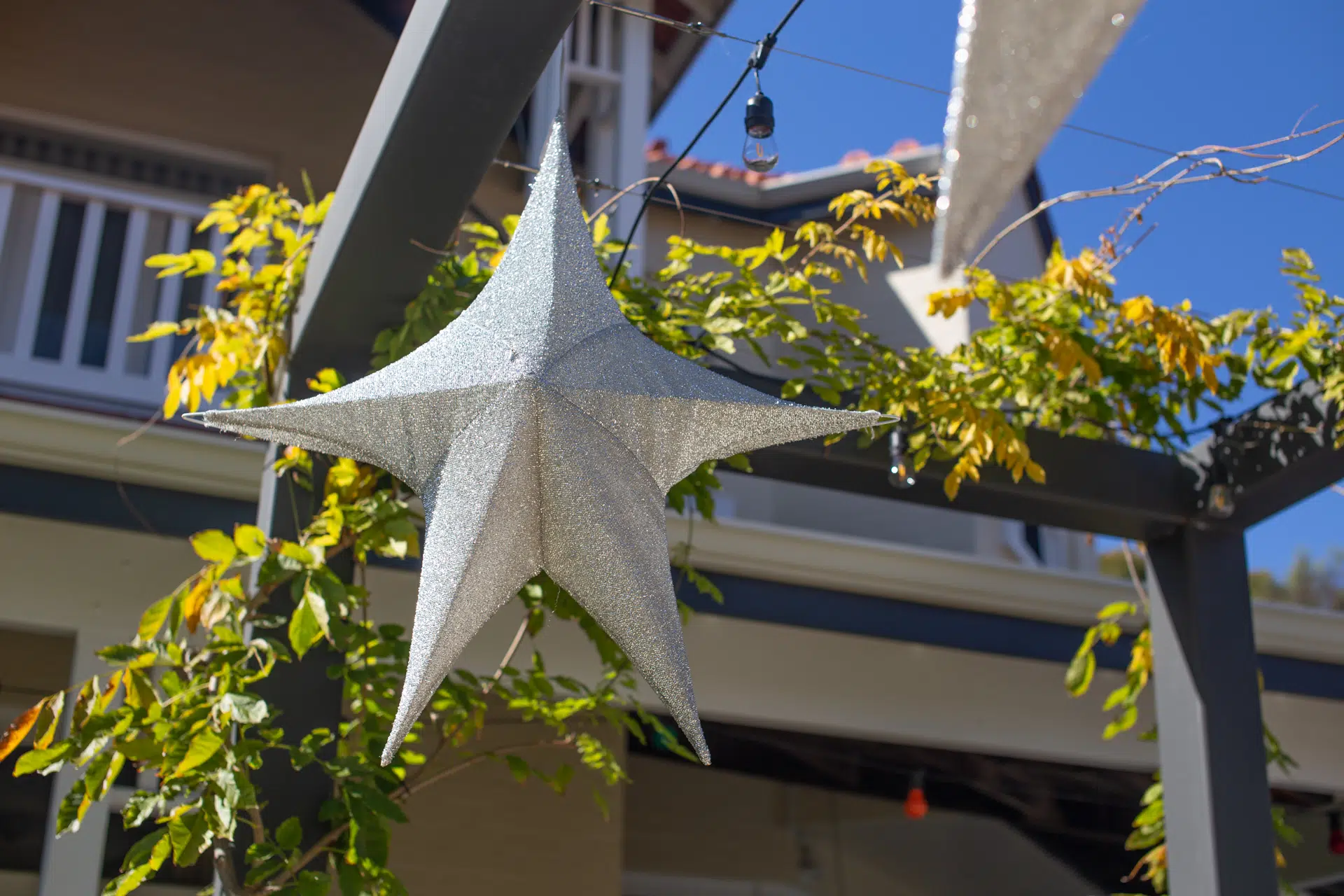
Consider the Formality of the Design
Many (but by no means all) Mediterranean gardens are designed to be somewhat formal, and if this appeals to you as a home gardener, you’re in luck. Formal designs usually strive for bilateral symmetry, which makes them relatively easy to design. If you’re going for a formal design, aim for even numbers in your planting, and consider if your garden will suit a central focal point. Try not to let the planting become stagnant, however, and aim to strike a balance between plants that mirror each other directly and ones that compliment each other. Variety in colours, sizes and textures is a big part of the appeal of Mediterranean gardens. For year-round variety, try to choose plants that flower at different points in the year. While not always possible, if done correctly, it can maintain the colour of your garden of colour and avoid patchy designs.
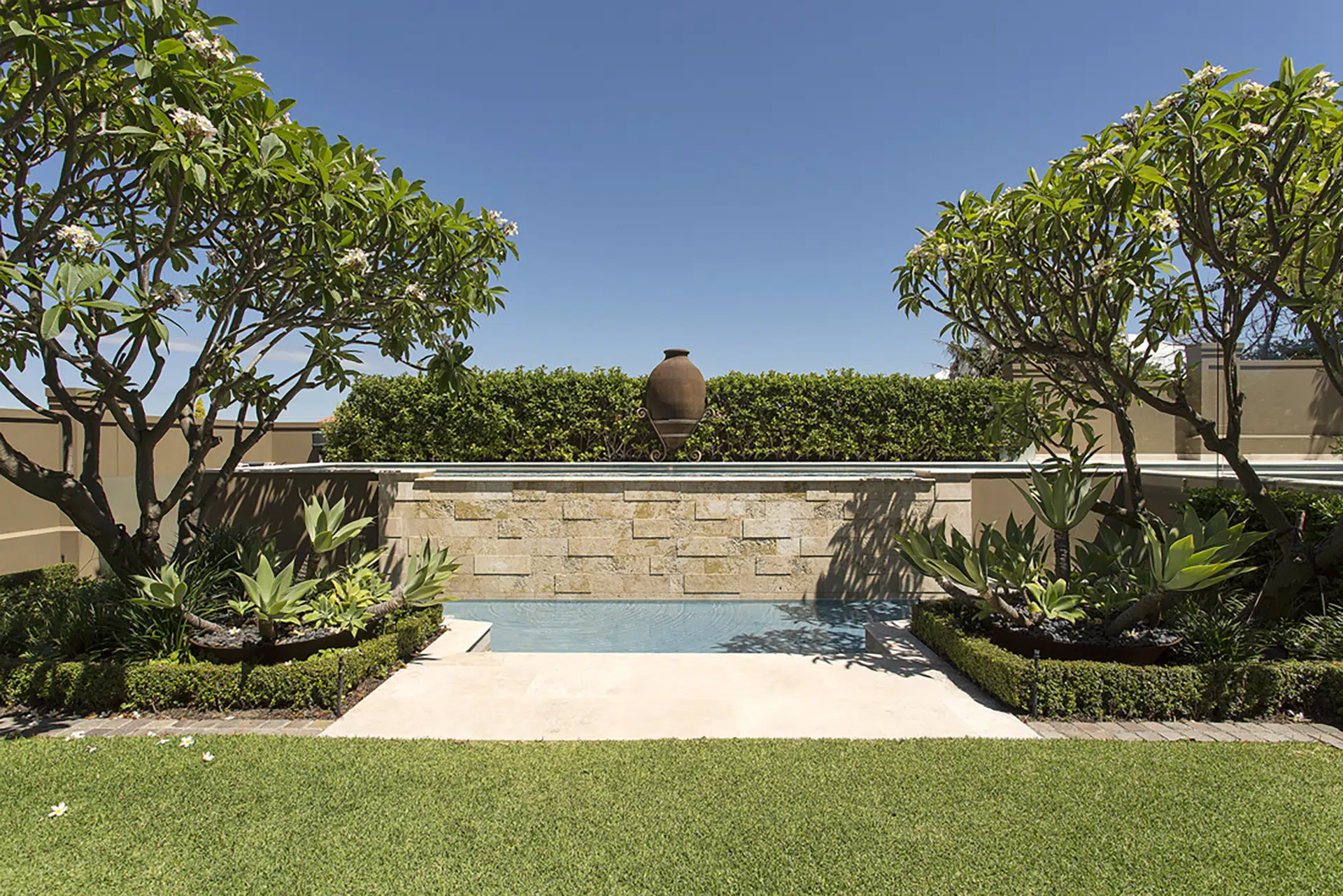
Make use of Pots and Accessories
While you’re developing your outdoor Mediterranean area, be sure to incorporate a few pots and accessories to enhance the space. Large terracotta pots in various shapes and heights can make the space feel more fleshed out. Decorative elements, like large urns, birdbaths, or boulders, can make great focal points or can be used to fill in difficult areas and provide variety.
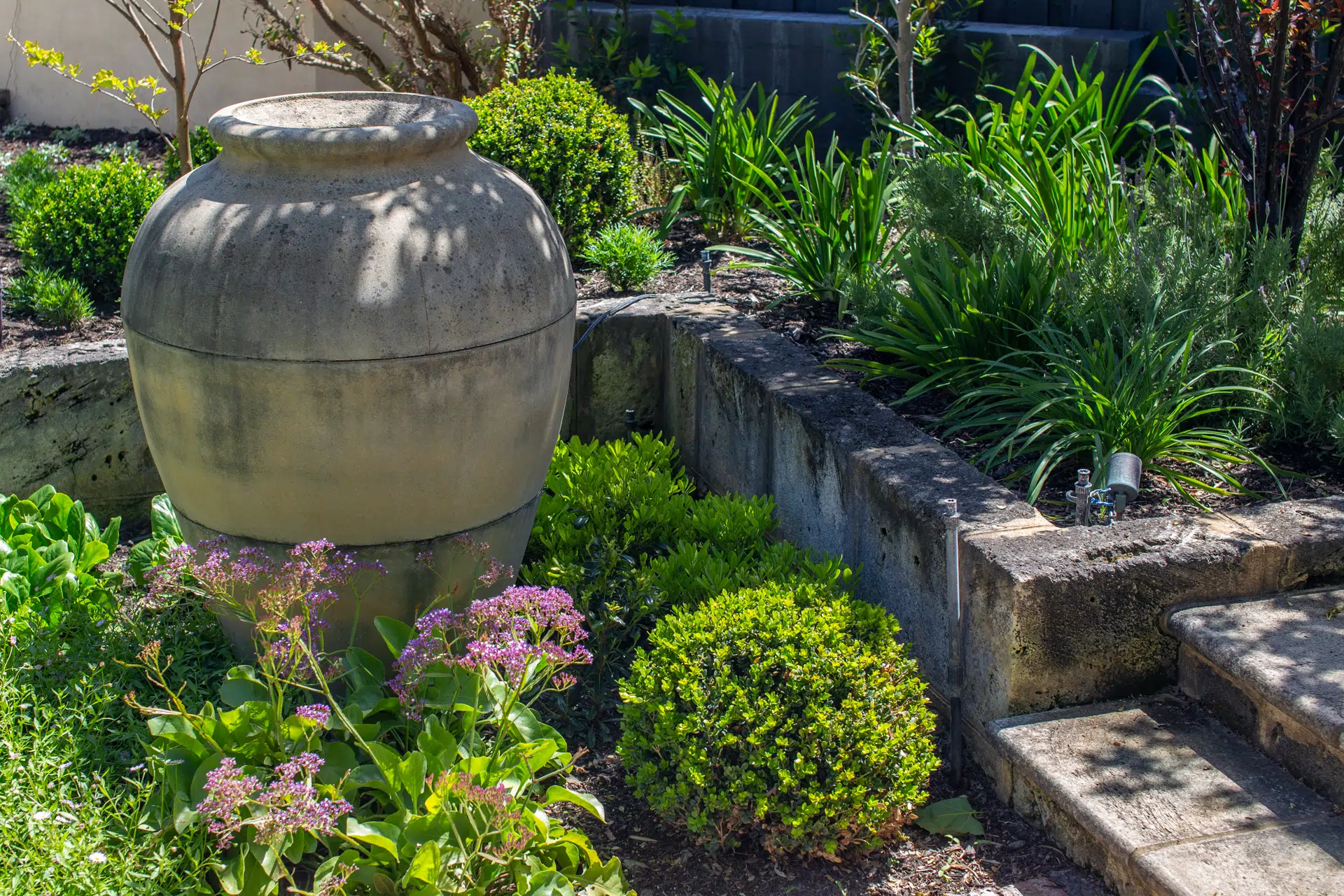
Choosing the Right Plants
Pulling off the Mediterranean garden means choosing the right plants for the look, and for your space. Incorporating plants with silver-coloured foliage, as well as flowering plants and herbs can go a long way towards achieving this look. Short, bushy, mixed plantings that are allowed to grow into their natural shapes can work well in a rustic, free-flowing design. Some Mediterranean gardens use more uniform hedges to structure the space. Hedges of Rosemary also provide additional function and a sensory quality to the space. Citrus trees can also be a great addition to Mediterranean planting. You can even get away with using some Australian natives and succulents to achieve this look, this will help to keep your garden water-wise.
Some of the plants that you might want to consider include cotton lavender, which has aromatic leaves; artemisia, with its elegant upright leaves; globe thistle, which have lovely blue and white flowers; and lamb’s ear, which has velvet-like greyish-green foliage. There are countless options for these kinds of gardens, but keep an eye on how the growing conditions of the plants you like compare with those of your space.

Arrange your planting according to their needs
If you’re looking to DIY your garden, you’ve probably got some experience with growing. In case you don’t, one of the most common mistakes new gardeners make is placing their plants where they think they’ll look good, without checking if the position is right for the plant. Many Mediterranean plants are drought tolerant, but be sure to place your more vulnerable plants in sheltered areas. If your garden is lacking in shade and protection, you can create it by planting trees and taller sun-loving plants in the areas you’re looking to protect.
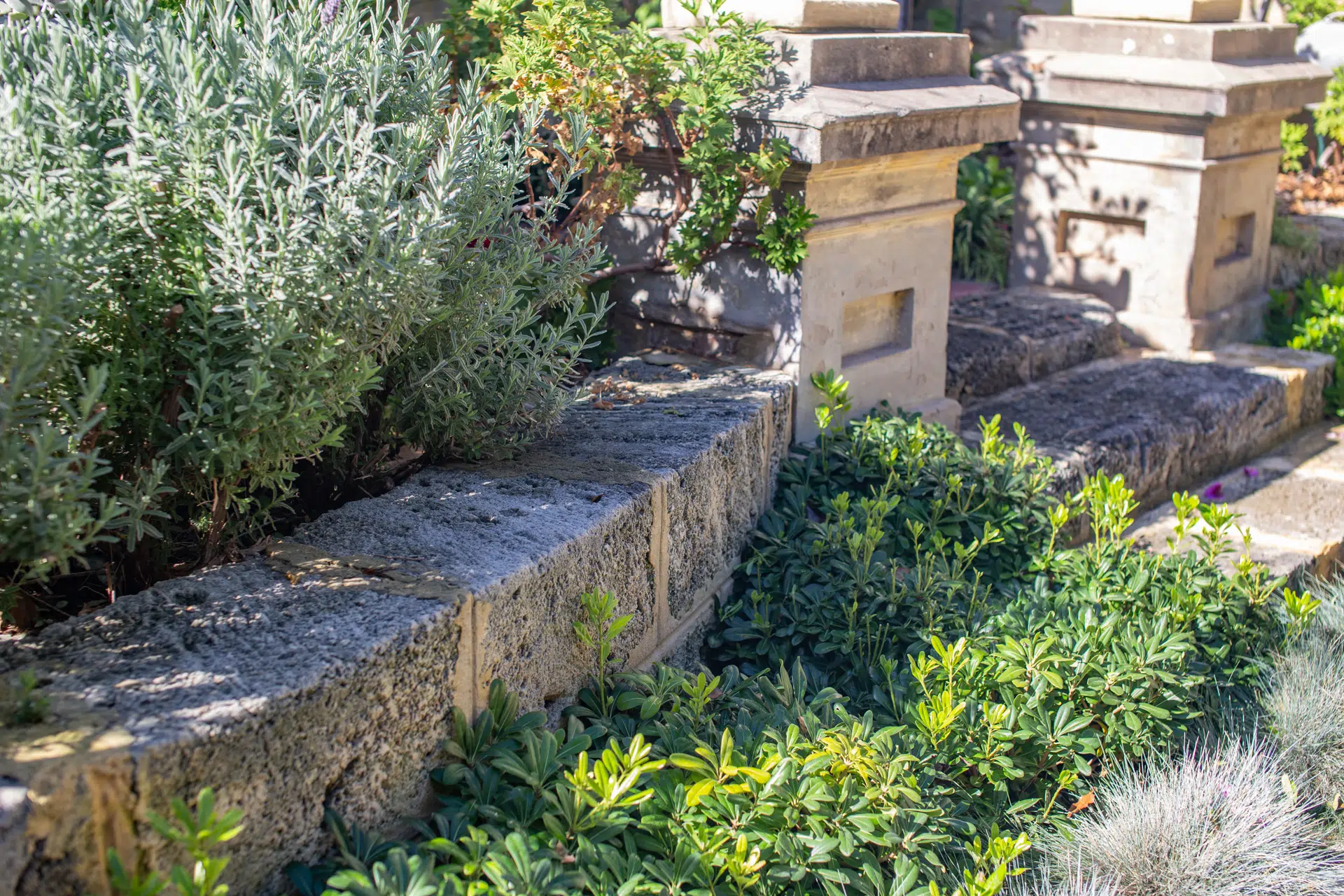
Be Sure to Add Herbs to the Garden
Not all of your Mediterranean garden plants have to be flowers and shrubbery, in fact, herbs and fruiting trees are a big part of Mediterranean culture. Adding fragrant herbs throughout the landscape, not just in a separate herb garden, can make the area both look and smell better. Mediterranean hillsides often contain herbs such as thyme and lavender, and if you plant these two so that the full sun reaches them, the entire area will benefit from their aroma.
You can also use other woody herbs as well, such as sage, marjoram, oregano, and rosemary, which will have a similar effect. When it comes to herbs in these gardens, the more the merrier.
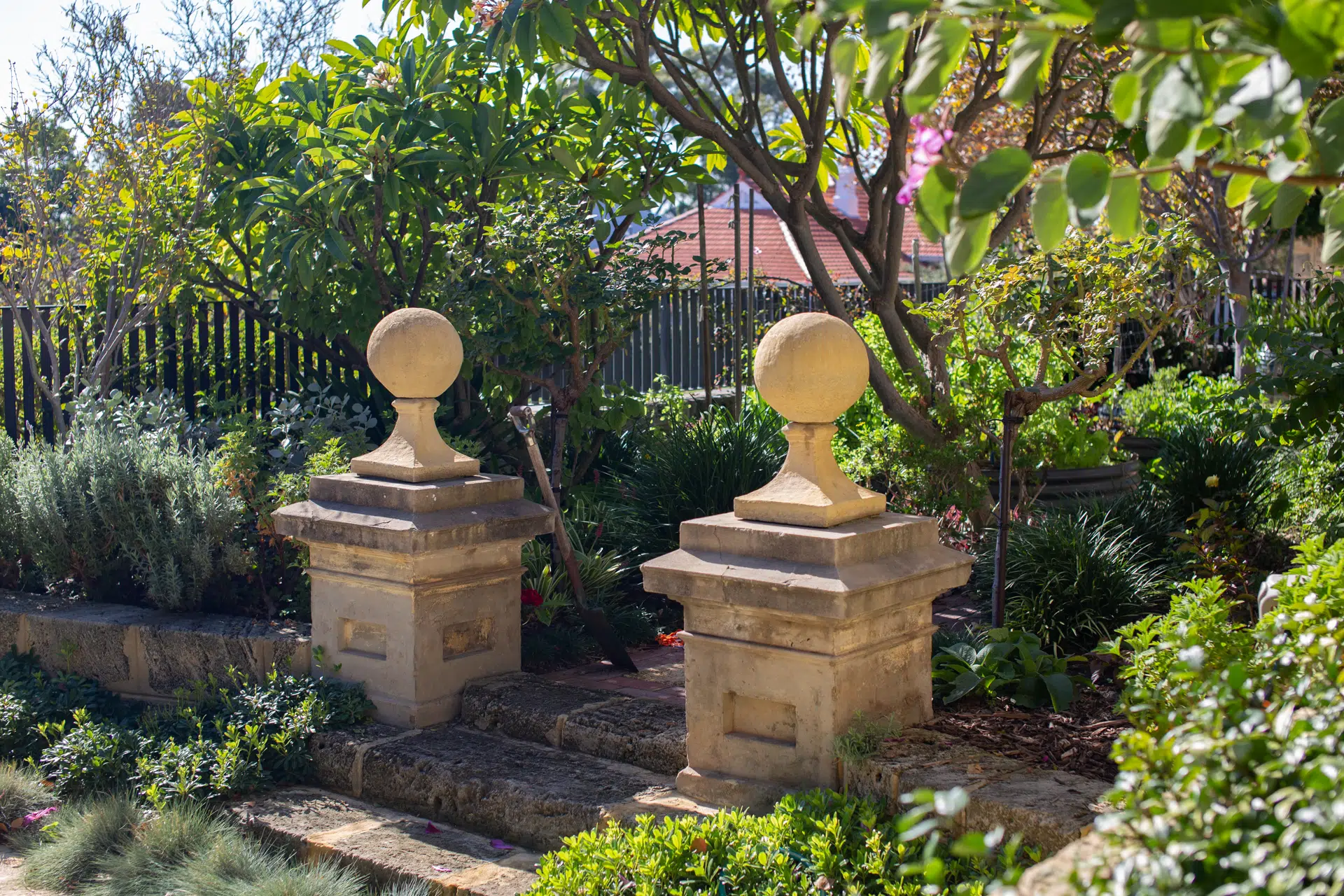
Plant Olive Trees for Added Effect
Nothing says “Mediterranean” like olive trees, and they’re exceptionally hardy, so adding one to your garden is a great idea, especially if you decide to use it as a focal point. Olive trees are often found in Mediterranean countries, but that doesn’t mean they can’t handle a cooler climate if you put them in a spot that offers a bit of shelter.
You can even grow olive trees if you live in an area that gets frost, provided you plant it in a pot and bring it under cover when the weather turns cooler.
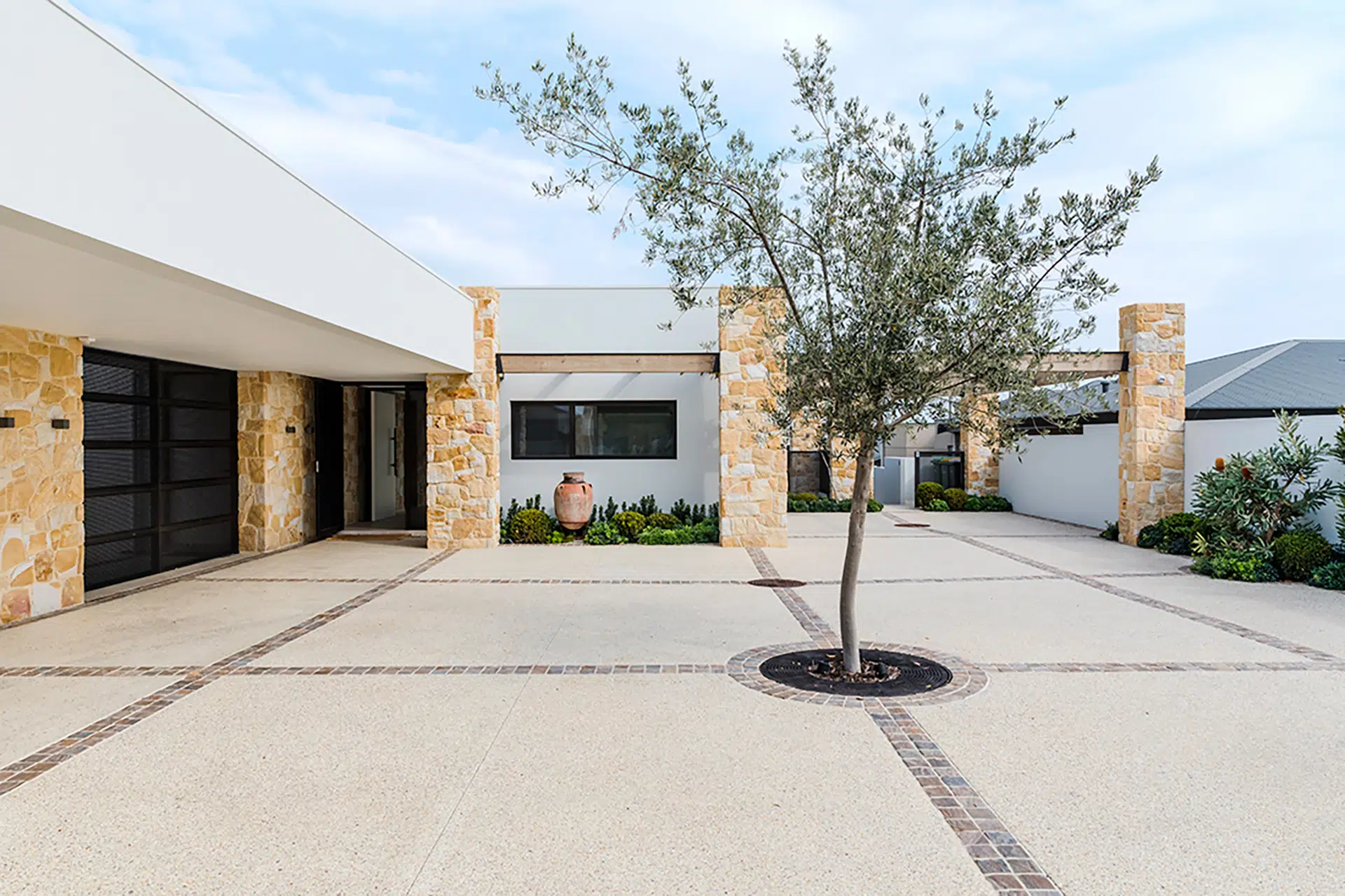
Add Other Types of Trees
And while you’re at it, there are other trees that do great in most gardens. fruiting trees like citrus and figs are a great addition if you don’t mind putting a bit of extra care into your garden. While citrus trees can be a little tricky for some climates, they are relatively easy to grow and complement the rest of the garden. Including edible plants into your garden invites you outside, and provides the opportunity for an extra pleasurable dimension to the landscape, that of cultivating something you can share and enjoy.
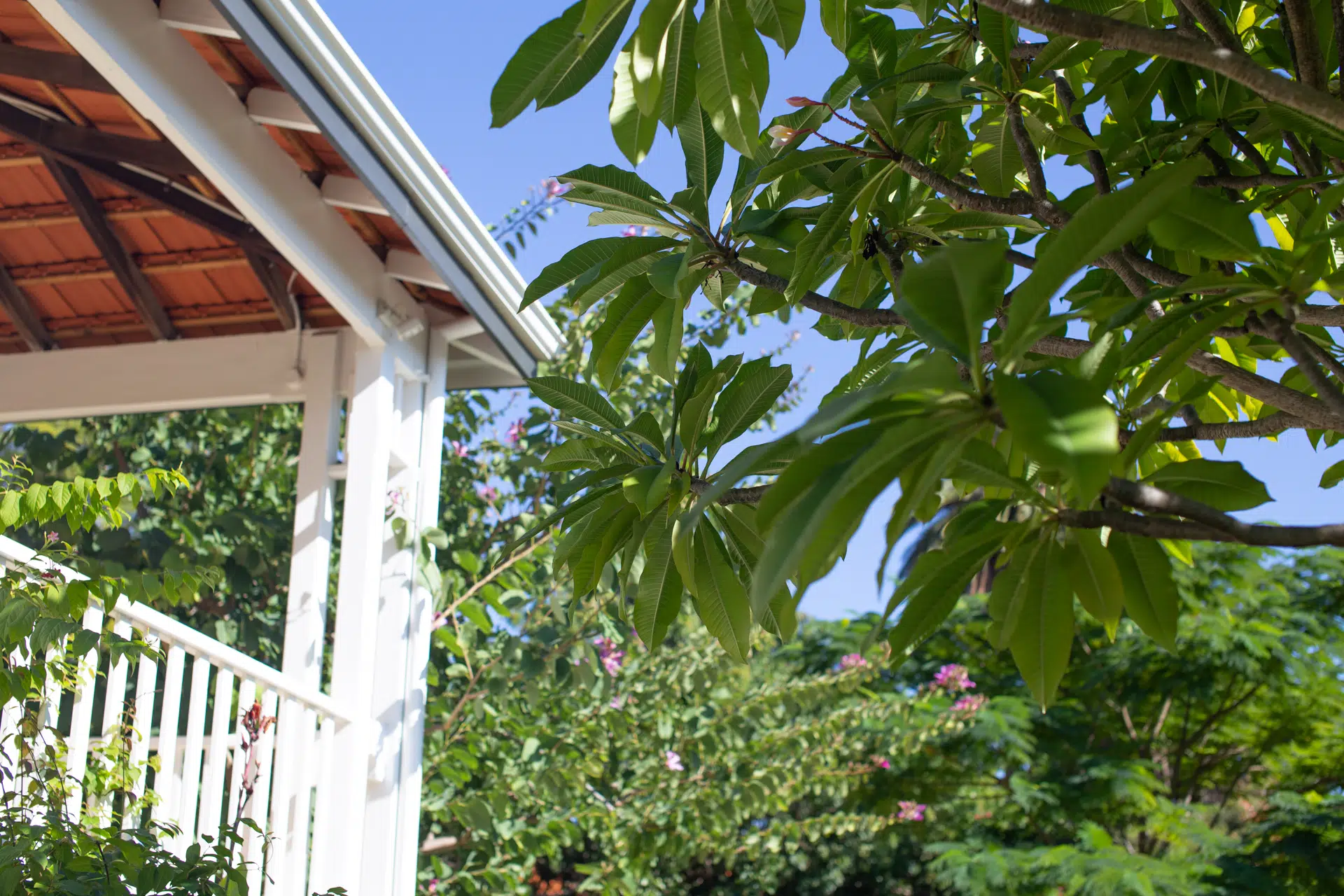
Add a Water Feature
Adding bird baths and/or water features is one of the best Mediterranean garden ideas that you can implement. They are a simple way to make a big statement and can contribute to the rich sensory experience of the garden. You can try a freestanding design that acts as your focal point or a back-to-wall fountain that covers a larger amount of the garden area. Water features are available in a wide variety of sizes and scales, but even including a small birdbath can achieve the desired effect.
